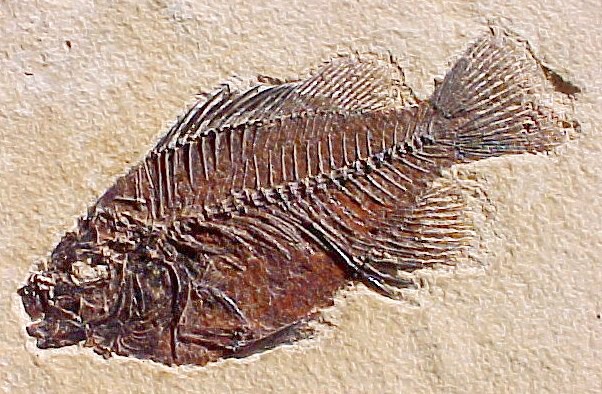Priscacara liops Green River Formation.jpg on:
[Wikipedia]
[Google]
[Amazon]
 ''Priscacara'', is a
''Priscacara'', is a
 ''Priscacara'', is a
''Priscacara'', is a genus
Genus ( plural genera ) is a taxonomic rank used in the biological classification of living and fossil organisms as well as viruses. In the hierarchy of biological classification, genus comes above species and below family. In binomial nom ...
of extinct temperate bass
The Moronidae are a family of perciform fishes, commonly called the temperate basses, consisting of at least six freshwater, brackish water, and marine species. Many members of this family are anadromous. Description
These fishes reach 45 cm to o ...
described from Early to Middle Eocene
The Eocene ( ) Epoch is a geological epoch that lasted from about 56 to 33.9 million years ago (mya). It is the second epoch of the Paleogene Period in the modern Cenozoic Era. The name ''Eocene'' comes from the Ancient Greek (''ēṓs'', "da ...
fossils. It is characterized by a sunfish-like body and its stout dorsal and anal spines. The genus is best known from the Green River Formation
The Green River Formation is an Eocene geologic formation that records the sedimentation in a group of intermountain lakes in three basins along the present-day Green River in Colorado, Wyoming, and Utah. The sediments are deposited in very fine ...
of Wyoming, Utah and Colorado. Mass deaths of ''Priscacara'' suggest it formed schools.
History and classification
Thetype species
In zoological nomenclature, a type species (''species typica'') is the species name with which the name of a genus or subgenus is considered to be permanently taxonomically associated, i.e., the species that contains the biological type specime ...
of ''Priscacara'' is ''P. serrata'', described from the holotype specimen
A holotype is a single physical example (or illustration) of an organism, known to have been used when the species (or lower-ranked taxon) was formally described. It is either the single such physical example (or illustration) or one of several ...
, AMNH 2442. Two species are described from northwestern North America. Hesse (1936) described ''Priscacara campi'' from a single complete fossil found in the Middle Eocene Roslyn Formation of central Washington. A third species, ''Priscacara aquilonia'' was described by Wilson (1977) from the Early Eocene " Horsefly shale" of British Columbia
British Columbia (commonly abbreviated as BC) is the westernmost province of Canada, situated between the Pacific Ocean and the Rocky Mountains. It has a diverse geography, with rugged landscapes that include rocky coastlines, sandy beaches, ...
.
A phylogenetic review of ''Priscacara'' by Whitock (2010) recognized only two species, ''P. serrata'' and ''P. liops''.
'' Cockerellites liops'', holotype USNM 4044 had been placed in ''Priscacara'' as ''P. liops'' but is now considered a separate genus.
''C. liops'' is the most common species of ''Priscacara'' within the Green River lacustrine
A lake is an area filled with water, localized in a basin, surrounded by land, and distinct from any river or other outlet that serves to feed or drain the lake. Lakes lie on land and are not part of the ocean, although, like the much larger ...
deposits and at certain locations it outnumbers ''P. serrata'' by over 3:1. The two species differ in the number of dorsal and anal fin rays, as well as possibly a coarser serrated rear edge of the preopercle in ''P. serrata''. ''C. liops'' also has small conical teeth on the pharyngeal jaw, whereas ''P. serrata'' has large grinding toothplates, suggesting a diet of snails and crustaceans.Distribution
''Priscacara'' fossils are commonly preserved in the Fossil Lake deposits of Eocene age in westernmost Wyoming, but are rare in the coeval Lake Gossiute sediments of Wyoming and the Lake Uinta deposits of Utah and Colorado. The genus also occurs in the middle Eocene lake deposits of Washington and British Columbia.References
Percidae Prehistoric perciform genera Eocene fish Cenozoic fish of North America Horsefly Shales {{percidae-stub